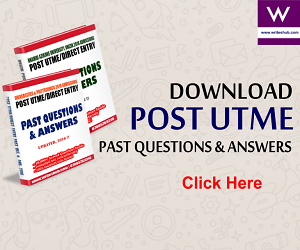Abstract
Self-Monitoring Analysis and Reporting Technology (SMART) is an interface between a computer's start-up program or BIOS (basic input/output system) and the computer hard disk. SMART Technology: Applications, challenges and Sustainability. It is a feature of the Enhanced Integrated Drive Electronics (EIDE) technology that controls access to the hard drive.SMART Technology: Applications, challenges and Sustainability. If
S.M.A.R.T is enabled when a computer is set up, the BIOS can receive analytical information from the hard drive and determine whether to send the user a warning message about possible future failure of the hard drive.
The latest "SMART" technology not only monitors hard drive activities but adds failure prevention by attempting to detect and repair sector errors. SMART Technology: Applications, challenges and Sustainability. Also, while earlier versions of the technology only monitored hard drive activity for data that was retrieved by the operating system, this latest SMART tests all data and all sectors of a drive by using "off-line data collection" to confirm the drive's health during periods of inactivity. . The advantages of this technology are enormous. Hard disk failures are quite tantamount to the general life cycle of computer systems. Once they are tampered either by intuition or accidentally, the risk involved can always better be imagined than experiences.
Smart technology has found application in virtually all aspects of life ranging from education to health. However, this had not been without some challenges. SMART Technology: Applications, challenges and Sustainability. But then, the drive towards sustainability is already in high key. This paper therefore discusses some of the applications of this SMART technology in diverse aspects of life. SMART Technology: Applications, challenges and Sustainability. It also makes an overview of the challenges as well as sustainability initiatives of this technology in details.
Introduction
Stands for "Self-Monitoring Analysis And Reporting Technology." It is used to protect and prevent errors in hard drives. The SMART technology basically monitors and analyzes hard drives (hence the name), then checks the health of your hard drive and lets you know if t. . .
DISCLAIMER!!!
This material has been developed for use as term paper and
research material for academic purposes for GST 122: Science and Basic Technology. Only the abstract is given here for PREVIEW purposes ONLY. Note that this is just a sample copy out of several
already made copies different from but in tune with the context and
ideas contained herein. Please do not copy it as it might have
already been copied by another student. Be vigilant.
However, you may hire any of our writers here for a complete work
from abstract to references OR purchase an already made work
from us at very affordable rates. We are experts at research, book review, term papers and assignment materials writing based in the school. Remember, it is one man, one job! We do not reproduce works nor resale already sold materials. You may review our other jobs on this blog for reference purposes. To contact/hire us today please follow our contact on the foot of this page.
kokohands_uniuyo: excellence at its very best!!
See other term paper topics for 2013/2014 University of Uyo GST
122: Science and Basic Technology below. These topics are meant
for only FULL TIME students.
Green cloud computing: a technology for environmental
sustainability and energy efficiency.
ICT technology Innovations and Virtual office Sustainability
Maximizing natural resources exploitation through ICT
SMART Technology: Applications, Challenges & Sustainability
The relevance 0f Internet to Education in contemporary society
Pervasive computing: a panacea for environmental degradation
ICT is the major culprit of environmental degradation
Infrastructural capacity building for enterprise e-learning portal
Alternative energy sources for the future
Rapid technological development and its applications in human
development
Instructions
Each student is to write on a topic that corresponds with the last (rightmost) digit of his/her registration number. For example, a student with Reg. No. 13/SC/CO/123 has topic no 3, while 13/SC/CO/128 should write on topic 8 and so on. However, students with ‘0’ as the rightmost digit, are to write on topic 10. Any student who attempts a topic that does not match with his/her Registration number will score ‘0’.
Deadline for submission is Monday, 01-12-2014. Time 12.00
noon at the respective lecture venues. Term papers should be handwritten and NOT more than 15 pages. Submission by proxy (i.e., on behalf of another student) WILL NOT be allowed.
Interested students may hire any of our writers here by dialing our phone number below to arrange readymade materials on any of the topics above for them. Our term papers are formatted to bear the features of standard University of Uyo term papers and include among others;
Abstract (1 page)
Introduction (1 page)
Body
Preceding (2 pages)
Context (2 pages)
View (2 pages)
Case studies (2 pages)
Rationale and Perspective (2 pages)
Conclusion (1 page)
Recommendation (1 page)
References (1 page)
Dial/contact us on: 07085763316





No comments:
Post a Comment
We appreciate your comments, and would respond to them as soon as possible. thanks.
Note however that spamming or posting abusive and offensive comments is simply wasting of your time as they will always be deleted. Please be cautious and invest your time wisely with useful and meaningful comments.